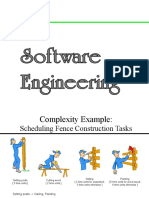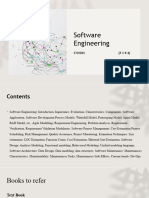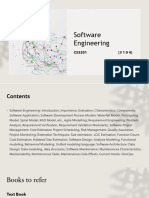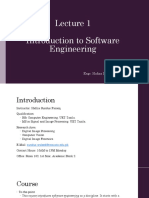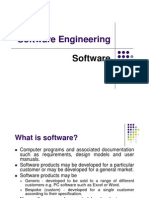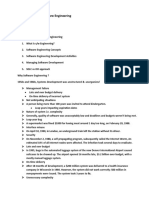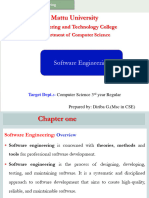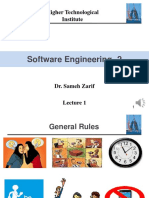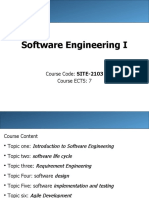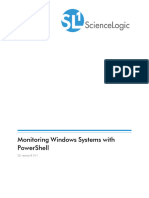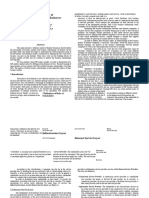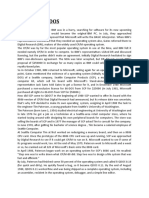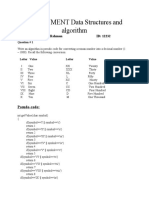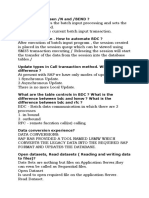0% found this document useful (0 votes)
120 views45 pages319 Introduction To Software Engineering
The document provides an introduction to software engineering. It discusses the goals of understanding the software development process, acquiring project management skills, and ensuring high quality software through testing and quality assurance. It defines software engineering as the discipline concerned with all aspects of software production. The importance of software engineering is discussed, noting that it helps reduce complexity, cost, and time while improving reliability. Required software engineering tasks involve learning new disciplines, communicating with experts, and designing systems to meet long-term business needs. The role of software engineers is to understand customer requirements and design software accordingly.
Uploaded by
MD NASIFCopyright
© © All Rights Reserved
We take content rights seriously. If you suspect this is your content, claim it here.
Available Formats
Download as PDF, TXT or read online on Scribd
0% found this document useful (0 votes)
120 views45 pages319 Introduction To Software Engineering
The document provides an introduction to software engineering. It discusses the goals of understanding the software development process, acquiring project management skills, and ensuring high quality software through testing and quality assurance. It defines software engineering as the discipline concerned with all aspects of software production. The importance of software engineering is discussed, noting that it helps reduce complexity, cost, and time while improving reliability. Required software engineering tasks involve learning new disciplines, communicating with experts, and designing systems to meet long-term business needs. The role of software engineers is to understand customer requirements and design software accordingly.
Uploaded by
MD NASIFCopyright
© © All Rights Reserved
We take content rights seriously. If you suspect this is your content, claim it here.
Available Formats
Download as PDF, TXT or read online on Scribd
/ 45




